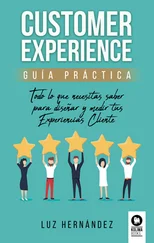We went on to describe some of the social implications of truly ubiquitous, always-on interactivity, suggesting that our vision of the 1:1 future:
holds immense implications for individual privacy, social cohesiveness, and the alienation and fractionalization that could come from the breakdown of mass media. It will change forever how we seek our information, education, and entertainment, and how we pursue our happiness. In addition to the “haves” and “have nots,” new class distinctions will be created between the “theres” and “there nots.” Some people will have jobs that require them to be there —somewhere—while others will be able to work mostly from their homes, without having to be anywhere.
However, while we thought this future was still a decade or two away, the year after our book was published Netscape released its Navigator web browser, the first commercial product that truly allowed businesses to participate in a completely new interactive medium, the World Wide Web. And commercial interest in the World Wide Web grew explosively. There were just 130 websites at the end of 1993, most operated by academic or government entities, but by 1997 there were more than a million, and by 2001 there were nearly 30 million, almost all of which belonged to businesses. 1
These businesses all needed advice, help, answers, and suggestions. They wanted to know what the best policies would be for succeeding in a world where their customers were now just a click away from the competition. Our book took off as webmasters working for companies around the world sought out new strategies and best practices for interacting with their customers one at a time, now that they could. The management guru Tom Peters called The One to One Future the “book of the year” in 1993, and in 1994 BusinessWeek called it the “bible of the new marketing.” In 1995 Inc . magazine put us on its cover, and George Gendron, the magazine's chief editor, said “Peters was wrong. This is not the book of the year. It's not even the book of the decade. It's one of the two or three most important business books ever written.” 2
So we kept thinking about all this, and we wrote more books, and we began conducting workshops and giving presentations to businesses, associations, and conferences around the world. We formed a consulting company, Peppers & Rogers Group, all the better to help companies come to grips with the powers and limitations of this new type of marketing. Over the years we have consulted for, spoken with, and advised literally hundreds of companies in more than 60 countries around the world, from Algeria, Argentina, and Bulgaria, to Turkey, the United Kingdom, and Vietnam. We know what works and what doesn't, and we also know what works in some cultures but not so much in others. Moreover, when someone— anyone —comes up with a promising new idea in this discipline, we rapidly hear about it. And then we speak about this new idea, and we write about it.
We created the IDIC framework (identify-differentiate-interact-customize) in the mid-1990s as a part of our consulting methodology. We tested it and refined it during our consulting work for many different companies before it first appeared in print in our 1999 book The One to One Fieldbook: The Complete Toolkit for Implementing a 1to1 Marketing Program, which we wrote with the leader of Peppers & Rogers Group's consulting practice, Bob Dorf. The Fieldbook included checklists, questionnaires, exercises, and self-help tools to guide businesses looking to gain more of the advantages offered by the internet, mobile phones, customer databases, and mass-customization technologies. By 2004 this IDIC framework had clearly shown its merits, so we used it as an organizing principle for the first edition of this textbook, and it remains a highly useful organizing principle today.
As we write these words, companies all over the world are hard at work on their digital transformations, customer initiatives, and customer experience programs in an effort that was largely underway, but has been greatly accelerated by the COVID-19 crisis, and is likely to remain highly active even after the virus is finally gone. McKinsey estimated that e-commerce penetration levels alone increased so dramatically that in just the first three months of the COVID-19 crisis (2Q, 2020), the United States fully realized ten years' worth of e-commerce growth, 3 virtually at all once. Online penetration in the U.S. consumer economy has increased by 35%, on average, from the onset of COVID-19 through July 2021, 4 and figures from around the world show similar jumps. Whether you are contemplating a career in marketing, or your own company is hustling to get its digital act together, or you're simply trying to survive in a digital world where every quarter seems to produce a newly disruptive technology, we hope that the lessons in this revised and updated edition will be invaluable.
We have dramatically increased the emphasis on the financial issues that often confound marketers as they try to justify the business value of a better customer experience that may cost money in the short term. We've also radically reshaped the sections on customer analytics, to empower marketers with the knowledge they need to have intelligent conversations with the quantitative analysts, and to make objective, data-driven decisions without having to write an equation or calculate a standard deviation.
Each chapter begins with an overview and includes these elements:
Glossary terms are printed in boldface the first time they appear in a chapter, and their definitions are located in the full glossary at the end of the book, and all of the glossary terms are included in the index for a broader reference of usage in the book.
Sidebars provide supplemental discussions and real-world examples of chapter concepts and ideas.
Food for Thought discussion questions for each chapter appear at the end of Part I, Part II, and Part IIIof the book.
We anticipate that this book will be used in one of two ways: Some readers will start at the beginning and read it through to the end. Others will keep it on hand and use it as a reference book. For both groups of readers, we have tried to make sure the index is useful for searching by names of people and companies as well as terms, acronyms, and concepts.
If you have suggestions about how readers can use this book, please share those at peppersrogers1@gmail.com.
One more thing: In The One to One Future we did make one big prediction that has not come true, at least not yet anyway. Back then, we made this prediction in Chapter 9, which we titled “Make Money Protecting Privacy, Not Threatening It.” If anything, recent experience has shown that there are a number of giant, even monopolistic businesses today that show no intention whatsoever to protect their users' privacy. Indeed, some businesses have become very profitable, even though they were built on the premise that the private, personal data of their users is a commodity to be bought and sold to the highest bidder (quite literally). And we say users in this case because the consumers who use platforms like Facebook, Google, or even LinkedIn are not actual customers at all. Many such social media platforms' customers are the advertisers and other businesses that pay to gain access to users' personal data—data about the products or services a user has looked at, or even about the messages a user has exchanged with friends. As the saying goes, if you think an online product is free, that means you're not really the customer—you're the product.
So in this fourth edition we have also added extensively to our discussion of privacy protection—what it means, how it can happen, how it might occur in the future, what regulations are beginning to enforce it, and so forth. But don't get us wrong. We still think that the ultimate future will be one in which the most successful companies will be trustable —proactively trustworthy. They will want to act in their customers' own interest, because in the long run this will create the most value from each customer. We believe that the moral arc of progress continues to point upward—that, over time, more and more enterprises will find it in their own best interest, not just ethically but financially , to embrace a more socially beneficial purpose and to act in their customers' interest. Moreover, we predict that as more businesses embrace trustability, consumers will show less and less tolerance for privacy-abusing companies, even those that offer their services absolutely free to their users.
Читать дальше












